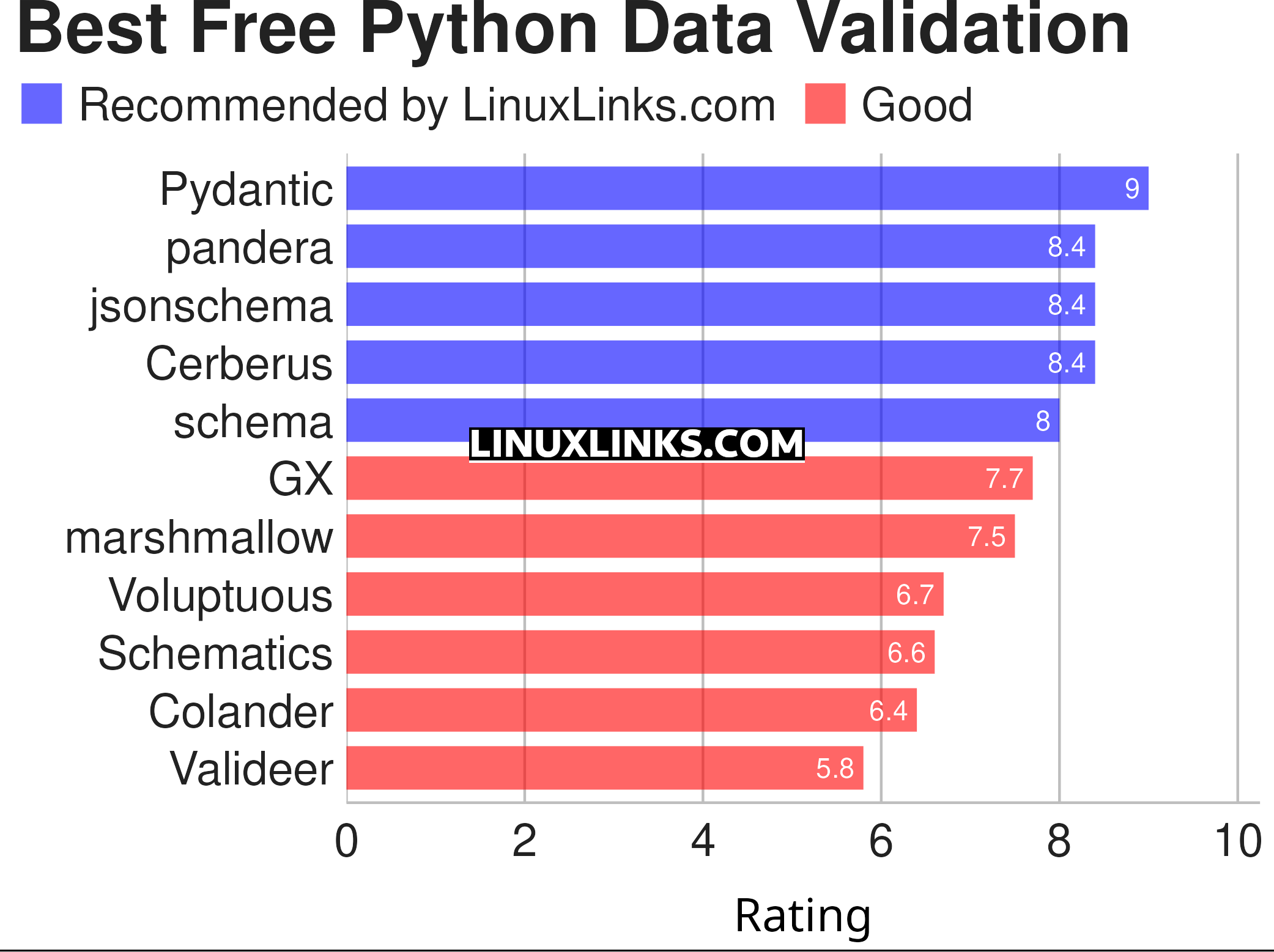Python is a very popular general purpose programming language — with good reason. It’s object oriented, semantically structured, extremely versatile, and well supported.
Programmers and data scientists favour Python because it’s easy to use and learn, offers a good set of built-in features, and is highly extensible. Python’s readability makes it an excellent first programming language.
Data validation is the process of checking if the data entered by users or collected from sources meets certain criteria, such as format, type, range, or consistency. Data validation can help prevent errors, improve data quality, and ensure compliance with business rules or regulations.
Here are our recommendations for performing data validation using Python. All of the software is free and open source goodness.

| Python Data Validation | |
|---|---|
| Pydantic | Data validation using Python type hints |
| pandera | Framework for precision data testing |
| jsonschema | Implementation of JSON Schema for Python |
| Cerberus | Lightweight and extensible data validation library |
| schema | Library for validating Python data structures |
| GX | Validating, documenting, and profiling data |
| marshmallow | ORM/ODM/framework-agnostic library |
| Voluptuous | Python data validation library |
| Schematics | Combine types into structures, validate , and transform the shapes of data |
| Colander | Serialization / deserialization / validation library |
| Valideer | Lightweight data validation and adaptation Python library |
This article has been revamped in line with our recent announcement.
 Read our complete collection of recommended free and open source software. Our curated compilation covers all categories of software. Read our complete collection of recommended free and open source software. Our curated compilation covers all categories of software. Spotted a useful open source Linux program not covered on our site? Please let us know by completing this form. The software collection forms part of our series of informative articles for Linux enthusiasts. There are hundreds of in-depth reviews, open source alternatives to proprietary software from large corporations like Google, Microsoft, Apple, Adobe, IBM, Cisco, Oracle, and Autodesk. There are also fun things to try, hardware, free programming books and tutorials, and much more. |
Python is a general-purpose high-level programming language. Its design philosophy emphasizes programmer productivity and code readability. It has a minimalist core syntax with very few basic commands and simple semantics, but it also has a large and comprehensive standard library, including an Application Programming Interface (API).
It features a fully dynamic type system and automatic memory management, similar to that of Scheme, Ruby, Perl, and Tcl, avoiding many of the complexities and overheads of compiled languages. The language was created by Guido van Rossum in 1991, and continues to grow in popularity, in part because it is easy to learn with a readable syntax. The name Python derives from the sketch comedy group Monty Python, not from the snake.
The prominence of Python is, in part, due to its flexibility, with the language frequently used by web and desktop developers, system administrators, data scientists, and machine learning engineers. It’s easy to learn and powerful to develop any kind of system with the language. Python’s large user base offers a virtuous circle. There’s more support available from the open source community for budding programmers seeking assistance.
